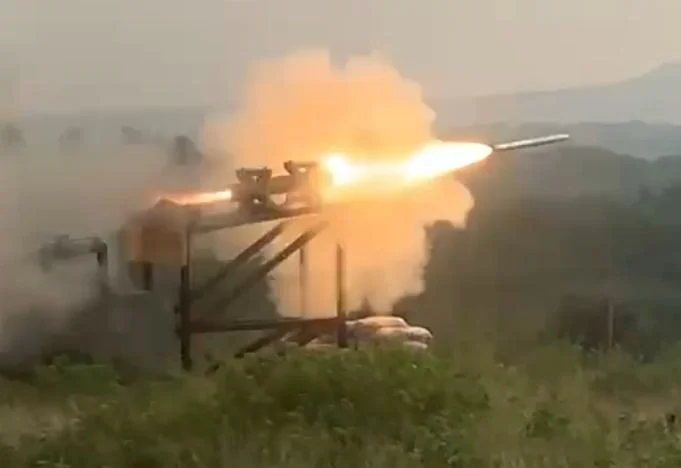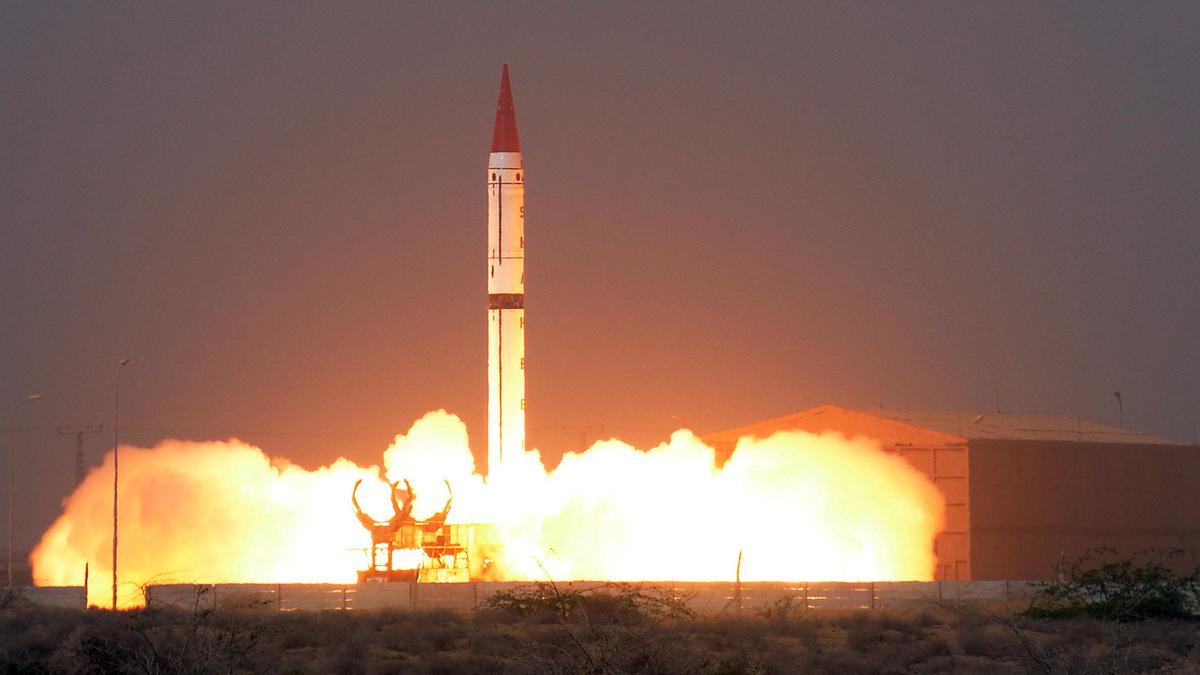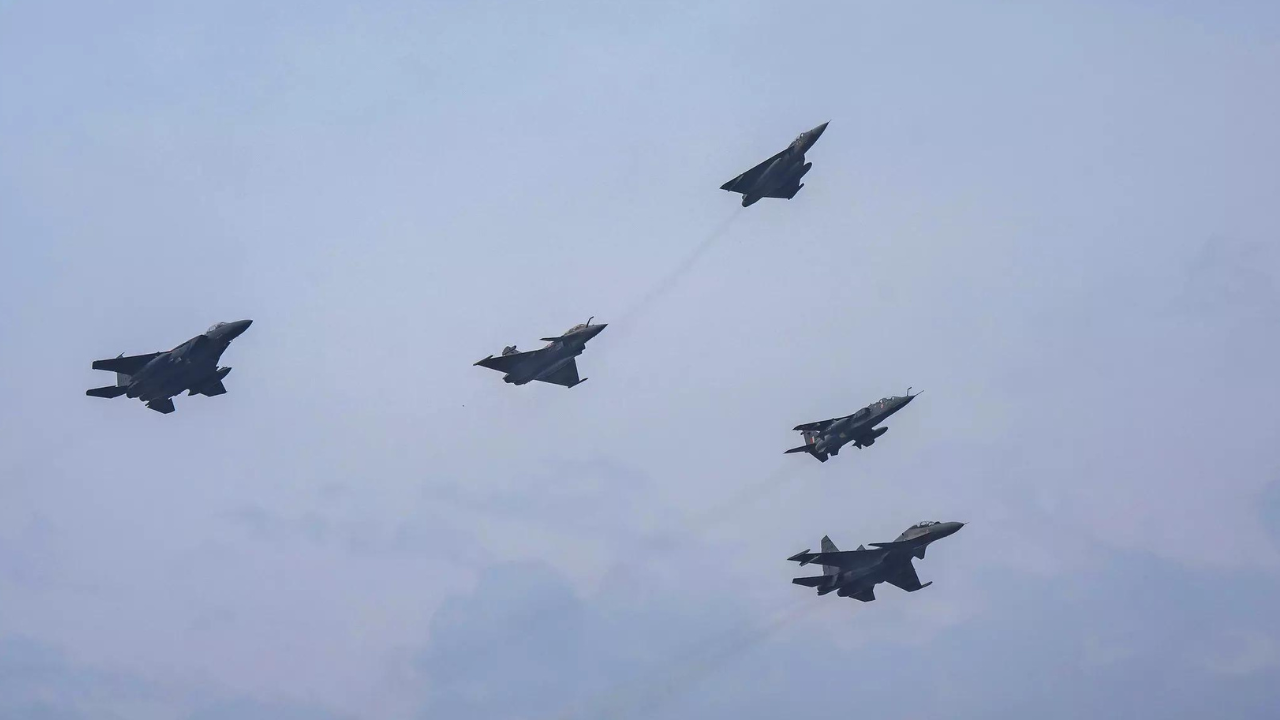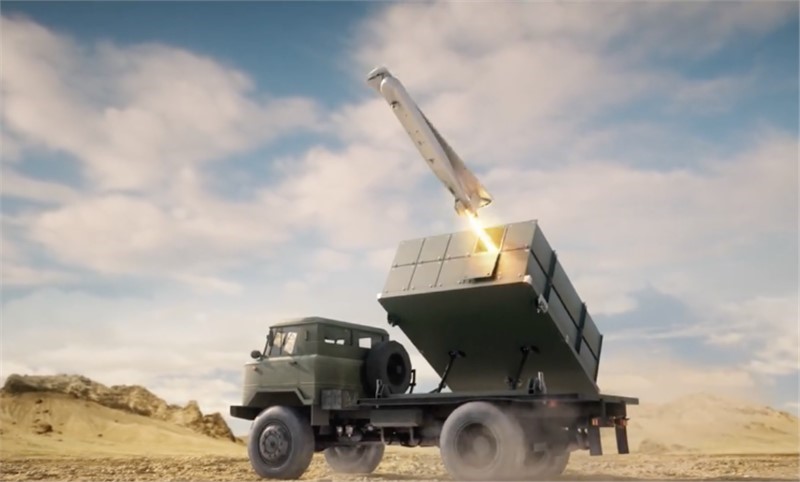SOURCE: RAUNAK KUNDE / NEWS BEAT / IDRW.ORG


India’s Light Combat Helicopter (LCH), the HAL Prachand, is poised for a significant enhancement in its offensive capabilities. A collaborative effort between TridenTech Engineering, IIT Madras, Bharat Electronics Limited (BEL), Reliance Aerospace Limited (RAL), and BILVA Technologies has resulted in the indigenous development of an 80mm unguided rocket.
This new weapon system is slated to arm the Prachand, replacing the existing 70mm calibre FZ275 LGR (Laser Guided Rocket) developed by Thales, a global leader in aerospace technology.
Continue readingSOURCE: RAUNAK KUNDE / NEWS BEAT / IDRW.ORG


Saab Aeronautics has positioned its Gripen-E fighter jet as a frontrunner in the Indian Air Force’s (IAF) Multi-Role Fighter Aircraft (MRFA) tender for 114 advanced jets by highlighting its adaptability and compatibility with Indian-made weapons, including the Astra Beyond Visual Range Air-to-Air Missile (BVRAAM) series. Per-Olof Marklund, Director and Head of Technology and Innovation at Saab Aeronautics, emphasized the Gripen-E’s flexible and open avionics architecture, which enables rapid integration of weapons and systems, sometimes in just hours.
This capability, driven by the jet’s unique split avionics architecture, offers India a versatile platform tailored to its self-reliance goals under the Aatmanirbhar Bharat initiative.
Continue readingSOURCE: AFI


Since the 2019 Balakot airstrike, which saw Indian Air Force (IAF) jets strike a Jaish-e-Mohammed (JeM) terrorist camp deep inside Pakistan, India has significantly bolstered its long-range missile capabilities. The induction of advanced munitions like the Rudram-II, ROCKS, SCALP, and BrahMos-A has transformed the IAF’s ability to conduct precision strikes deep inside Pakistan without needing to approach the International Border (IB) or Line of Control (LoC).
These upgrades, driven by lessons from Balakot and escalating regional tensions, enhance India’s standoff strike capabilities, enabling surgical operations while minimizing risks to aircraft and personnel.
Continue readingSOURCE: AFI


In any modern conflict, information dominance and situational awareness are often the deciding factors between success and failure. For the Indian Air Force (IAF), a potential future conflict with Pakistan demands a strategy that goes beyond tactical airstrikes and punitive retaliation. It requires shaping the battlespace by blinding the enemy early—specifically by targeting critical assets such as the Saab 2000 Erieye Airborne Early Warning and Control System (AWACS) operated by the Pakistan Air Force (PAF).
AWACS aircraft like the Saab 2000 Erieye are strategic force multipliers, enabling long-range detection, real-time command and control, and coordinated interception operations. These platforms serve as the eyes and ears of the PAF, extending radar coverage deep into Indian airspace and enabling early warning of IAF fighter or missile movements.
Continue readingSOURCE: AFI


@detresfa_
Satellite imagery captured on April 23, 2025, shows the Indian Navy’s indigenous aircraft carrier, INS Vikrant, underway in the Arabian Sea off the coast of Karwar, Karnataka. This deployment, reported widely on X and defense forums, underscores India’s growing naval prowess at a time of heightened tensions with Pakistan following the April 2025 Pahalgam terror attack.
With Pakistan suspending the Shimla Agreement, threatening to withdraw from the Tashkent Agreement, and mobilizing international pressure over India’s suspension of the Indus Waters Treaty (IWT), the Vikrant’s presence near Pakistan’s maritime frontier signals India’s readiness to assert dominance in the region. As India shifts its strategic focus to the International Border (IB) opposite Pakistan’s Punjab, the carrier’s operations could play a pivotal role in shaping the escalating crisis.
Continue readingSOURCE: AFI


In a potential escalation of diplomatic tensions, recent reports suggest that Pakistan is contemplating withdrawing from the Tashkent Agreement of 1966, a historic peace accord signed with India to end the 1965 war. This development follows the Shimla Agreement of 1972, which has long served as the cornerstone of bilateral relations between the two nations. The move, reportedly under consideration in response to India’s actions on the Indus Waters Treaty and heightened tensions after the 2025 Pahalgam terror attack, could have significant implications for South Asian geopolitics.
The Tashkent Agreement, signed on January 10, 1966, in Tashkent, Uzbekistan, was mediated by the Soviet Union to resolve the 1965 Indo-Pakistani War. Key provisions included the withdrawal of forces to pre-war positions, a commitment to non-interference in each other’s internal affairs, and the restoration of diplomatic and economic ties. However, the agreement failed to address the Kashmir dispute, leading to widespread criticism in both countries for its perceived shortcomings.
Continue readingSOURCE: ANI


Amid tensions with India after the Pahalgam terror attack, Pakistan has issued a notification regarding the scheduled test of a surface-to-surface missile off its Karachi coast within its Exclusive Economic Zone, sources told ANI. The notification was issued by Pakistani agencies at around 2130 Hours (9:30 PM) Indian time, which is around the same time Indian leadership was holding the key Cabinet Committee on Security meeting to take steps against Pakistan for its involvement in the Pahalgam, they said.
According to the sources, the missile test will take place between April 24 to April 25 and the Indian agencies concerned are closely monitoring the developments and keeping a close watch on the situation.
Continue readingSOURCE: UNI

The Indian Space Research Organisation (ISRO) is working fast to launch a special spy satellite to protect India’s borders and maintain constant surveillance after the terrorist attack in Pahalgam in Jammu and Kashmir.
ISRO is set to launch a special “radar imaging satellite” soon. This satellite can image during the day and night, as well as in cloudy weather. This will make it possible to monitor developments on India’s borders at any time, in any weather. NDTV has reported this.
Continue readingSOURCE: PTI


Pakistan on Thursday said any move to divert water meant for it under the Indus Water Treaty will be considered an Act of War as it announced the suspension of trade, bilateral accords, including the Simla Agreement, and airspaces with India, among other moves in retaliation to New Delhi’s measures against the country in the wake of the Pahalgam attack.
The announcements were made after a meeting chaired by Pakistan Prime Minister Shehbaz Sharif to formulate the country’s response to India’s move to suspend the Indus Water Treaty and downgrade diplomatic ties after the Pahalgam terror attack.
Continue readingSOURCE: PTI


The Indian Air Force (IAF) is carrying out ‘Exercise Aakraman’ in the central sector with its mainstream fighter aircraft taking part in it, sources said on Thursday.
However, this is a “routine exercise”, a source said. India’s frontline fighter jets include Rafales, Su-30s and other aircraft. Further details are awaited. The exercise is taking place at a time when the tension between India and Pakistan has gone up after the Pahalgam terror attack in Jammu and Kashmir on Tuesday.
Continue readingSOURCE: PTI
)

India on Thursday briefed New Delhi-based envoys of almost all G20 nations and those from its strategic partners on the dastardly Pahalgam terror attack and its link to cross-border terrorism, people familiar with the matter said.
Foreign Secretary Vikram Misri apprised the diplomats about various aspects of Tuesday’s terror attack that killed 26 innocent people and India’s firm policy of “zero tolerance” against terrorism, they said.
Continue readingSOURCE: PTI
)

Assam’s opposition AIUDF MLA Aminul Islam was arrested on Thursday on sedition charges for allegedly defending Pakistan and its complicity in the Pahalgam terror attack, Chief Minister Himanta Biswa Sarma said.
We have seen a video where the MLA is defending Pakistan and its complicity in the attack. I had instructed the police to take action and accordingly, the DGP has informed me that he has been arrested, Sarma said at a press conference here.
Continue readingSOURCE: UNI


In Punjab’s Ferozepur sector, a BSF jawan accidentally crossed the international border and went to Pakistan, after which Pakistani Rangers took him into custody. According to sources, this incident happened on Wednesday afternoon.
Jawan was identified as Constable PK Singh of the 182nd BSF battalion, who was on duty near a farm near the Indo-Pak border. During routine movement, PK Singh inadvertently crossed the Indian border fence and entered Pakistani territory, where he was detained by Pakistan Rangers across the Ferozepur border. PK Singh was in uniform and had his service rifle with him. According to intelligence sources, the BSF battalion has shifted from Srinagar to Mamdot.
Continue readingSOURCE: PTI
)

The Border Security Force (BSF) on Thursday said it has “scaled down” the retreat ceremony held at Attari, Hussainiwala and Sadki along the India-Pakistan border in Punjab in the wake of the Pahalgam terrorist attack.
The Jalandhar-headquartered BSF’s Punjab frontier, which guards 532 km of this front out of the total 2,200 km, said in a statement that as part of a “calibrated decision”, it was “suspending” the symbolic handshake of the Indian guard commander with its counterpart and the border gates will remain closed during the ceremony.
Continue readingSOURCE: IDRW.ORG


The Indian Army is actively pursuing the development of a long-range mobile launcher system for loitering munitions, capable of striking targets beyond 300 km from truck-mounted platforms. This ambitious initiative, driven by the need to counter advanced threats along India’s borders with China and Pakistan, marks a significant shift from the Army’s current inventory of short- to medium-range loitering munitions, such as the Nagastra-1, which have ranges of 30-100 km and are designed for man-portable operations.
According to defence sources close to idrw.org, the Army is engaging both public and private sector companies to meet this requirement, with preparations underway to issue a Request for Information (RFI) soon. This move underscores India’s strategic push to bolster its precision strike capabilities and adapt to the evolving dynamics of modern warfare, where long-range loitering munitions are proving to be game-changers.
Continue reading